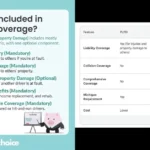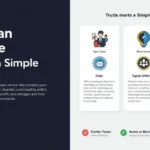In today’s competitive market, businesses face numerous challenges in maintaining profitability, satisfying customer demands, and staying ahead of competitors. One of the most effective ways to overcome these hurdles is through recurring business models. Recurring business refers to a revenue model where customers make repeat purchases, often through subscription services or contracts, providing a steady and predictable stream of income. This model has gained immense popularity across various industries due to its ability to foster customer loyalty, improve cash flow, and drive long-term business growth.
The Evolution of Recurring Business Models
The concept of recurring business isn’t new. It can be traced back to industries like print media, where subscriptions to newspapers and magazines have been commonplace for decades. Over time, other sectors such as telecommunications, utilities, and insurance adopted similar models. However, the real explosion of recurring business models came with the rise of the internet and digital services in the late 1990s and 2000s. Companies like Netflix, Amazon, and Spotify revolutionized how consumers access media and products, making the subscription model an essential part of the modern economy.
Today, the recurring revenue model extends well beyond digital services and is applicable to almost every industry. Software as a Service (SaaS) companies like Adobe and Microsoft now offer subscription-based access to their products. In retail, Dollar Shave Club and Birchbox have demonstrated how subscriptions can transform traditional consumer products into services. Even automotive and healthcare industries are exploring ways to leverage recurring business models to create more predictable and lasting revenue streams.
Types of Recurring Business Models
There are several distinct types of recurring business models, each with its own structure and benefits. These models cater to different industries and customer needs, and selecting the right one can significantly impact a business’s success.
1. Subscription Model
The subscription model is perhaps the most common form of recurring business. In this model, customers pay a recurring fee, typically monthly or annually, to access a product or service. The key to a successful subscription model is providing ongoing value, so customers feel incentivized to renew their subscriptions over time.
Examples:
- Media streaming services: Netflix, Spotify, Hulu
- Software services: Adobe Creative Cloud, Microsoft 365
- Subscription boxes: Birchbox, HelloFresh
2. Membership Model
The membership model is similar to the subscription model but typically involves access to a community, exclusive content, or specialized services. Members pay a recurring fee in exchange for premium access, which could include expert advice, educational content, or access to exclusive events.
Examples:
- Professional organizations: LinkedIn Premium, American Bar Association
- Fitness centers: Gym memberships, Peloton
3. Contractual or Retainer Model
This model is common in business-to-business (B2B) services where companies engage clients through contracts or retainers. Clients pay for services on a recurring basis, which could be monthly, quarterly, or annually, in exchange for ongoing support, maintenance, or consultation.
Examples:
- Consulting firms: Monthly retainer for advisory services
- Marketing agencies: Recurring payments for ongoing digital marketing campaigns
- Law firms: Legal retainers
4. Usage-Based Model
In the usage-based model, customers pay based on how much of a product or service they consume. This model offers flexibility, particularly for businesses where customer needs vary significantly month-to-month.
Examples:
- Cloud services: Amazon Web Services (AWS), Microsoft Azure
- Telecommunications: Pay-as-you-go mobile services, data usage fees
Benefits of Recurring Business
Implementing a recurring business model offers numerous benefits to both businesses and consumers. These benefits make recurring models highly attractive for companies seeking to enhance revenue predictability, foster customer loyalty, and reduce operational costs.
1. Predictable Revenue Streams
One of the most significant advantages of a recurring business model is the predictable revenue it generates. With recurring payments, businesses can better forecast income, making it easier to manage cash flow, allocate resources, and plan for future growth. This stability is particularly valuable in volatile markets, where one-time sales may fluctuate unpredictably.
2. Increased Customer Lifetime Value (CLV)
In a recurring business model, the focus shifts from acquiring new customers to retaining existing ones. By fostering long-term relationships with customers, businesses can increase their Customer Lifetime Value (CLV), which is the total revenue a business can expect from a single customer over the duration of their relationship. Higher CLV means more profits over time, even if the initial customer acquisition cost is higher.
3. Customer Loyalty and Engagement
Recurring models encourage customer loyalty by providing ongoing value and convenience. Customers are more likely to stay with a business that consistently meets their needs, reducing churn rates. Additionally, the subscription or membership model often comes with personalized customer experiences, fostering a deeper connection with the brand.
4. Operational Efficiency
A recurring business model can streamline operations by reducing the need for constant new customer acquisition. Companies can focus more on improving existing services, optimizing supply chains, and refining customer experiences rather than continuously investing in marketing to attract new buyers. This operational efficiency often translates into cost savings.
5. Scalability
Recurring business models are highly scalable, particularly for digital products and services. With the subscription model, businesses can grow their customer base without necessarily increasing costs proportionally. For example, SaaS platforms can onboard thousands of new users with minimal additional infrastructure costs, making it easier to scale.
Challenges in Recurring Business
While the recurring business model offers significant advantages, it also comes with its own set of challenges that businesses must navigate to ensure success.
1. Churn
Customer churn—when a customer cancels their subscription or service—is a critical challenge in the recurring revenue model. High churn rates can quickly erode the stability of a recurring business and make it difficult to sustain growth. Businesses must invest in customer support, engagement, and value delivery to minimize churn.
2. Delivering Continuous Value
The promise of recurring revenue comes with the expectation that the business will continue to provide value over time. Stagnation in product development, failure to adapt to changing customer needs, or subpar service can lead to dissatisfaction and eventually, churn. It’s crucial to have a robust customer success strategy in place to ensure ongoing value.
3. Pricing Strategy
Setting the right price for recurring services is a delicate balance. Pricing too low can result in undercut profits, while pricing too high might scare away potential customers. Furthermore, businesses must consider how to structure their pricing tiers, offer discounts for long-term commitments, and adjust prices based on market conditions without alienating existing customers.
4. Managing Subscription Fatigue
In a world where many services are subscription-based, consumers are increasingly experiencing “subscription fatigue”—a sense of being overwhelmed by the number of recurring payments they manage. Companies must differentiate themselves and offer clear, compelling reasons why their service is indispensable to combat this phenomenon.
Successful Strategies for Implementing Recurring Business Models
To succeed in the recurring business space, companies need to adopt well-thought-out strategies that address customer needs while ensuring long-term profitability. Below are some critical strategies businesses can employ to thrive with recurring revenue models.
1. Focus on Customer Retention
Customer retention should be at the core of every recurring business strategy. Providing excellent customer support, creating personalized experiences, and addressing customer concerns promptly can reduce churn and build loyalty. Regular communication, such as through newsletters or updates, helps keep customers engaged.
2. Offer Flexible Subscription Options
Flexibility is key in a world where customer preferences and needs can change. Offering different pricing tiers, allowing customers to pause their subscriptions, or providing customization options helps businesses cater to a broader audience and reduces the risk of churn due to dissatisfaction.
3. Leverage Data Analytics
Data is a powerful tool in optimizing a recurring business model. By analyzing customer usage patterns, feedback, and churn rates, companies can identify opportunities for improvement, introduce new features or services, and anticipate potential issues before they arise. Personalized marketing efforts can also be driven by data, targeting specific customer segments more effectively.
4. Create a Community
Building a sense of community around your product or service can greatly enhance customer loyalty. Whether through forums, events, or social media, engaging your customers and fostering connections between them can create a sense of belonging that makes it harder for customers to leave.
5. Implement a Loyalty Program
A well-designed loyalty program can complement a recurring business model by incentivizing customers to stay longer. Rewards for continued use, referrals, or achieving certain milestones within the service can enhance customer satisfaction and retention.
The Future of Recurring Business Models
The future of recurring business models is bright, with many industries continuing to adopt these strategies for growth and sustainability. As businesses move towards a more service-oriented economy, the subscription and recurring revenue models will only grow in prominence.
The integration of technologies such as artificial intelligence, machine learning, and the Internet of Things (IoT) will further refine these models, offering more personalized, data-driven services that can better meet customer needs. Automation and predictive analytics will help businesses anticipate customer behaviors, preferences, and challenges, leading to even more proactive strategies for reducing churn and boosting lifetime value.
Additionally, the rise of decentralized platforms, driven by blockchain technology, could further innovate recurring models, creating new paradigms in trust, transparency, and payment methods.
Conclusion
Recurring business models represent a significant opportunity for businesses to create stable, predictable, and scalable revenue streams. Whether through subscriptions, memberships, retainers, or usage-based models, these strategies provide the foundation for long-term success. However, the key to thriving in this landscape lies in delivering consistent value, reducing churn, and fostering strong relationships with customers. As technology continues to evolve, the recurring business model will only become more versatile, providing companies with innovative ways to meet the demands of a dynamic market.











